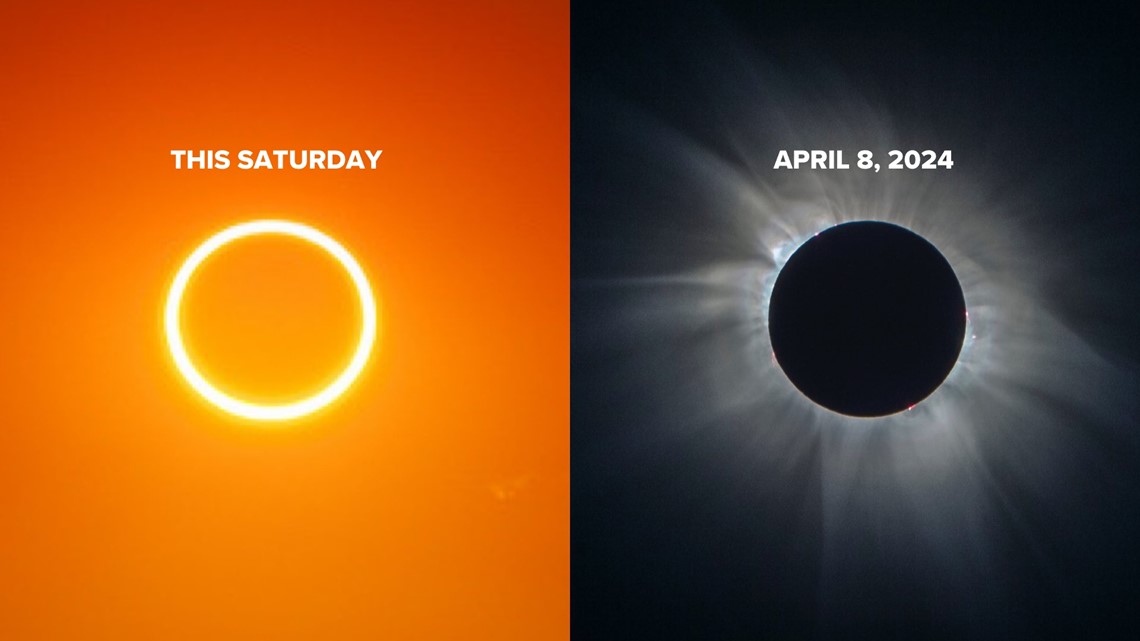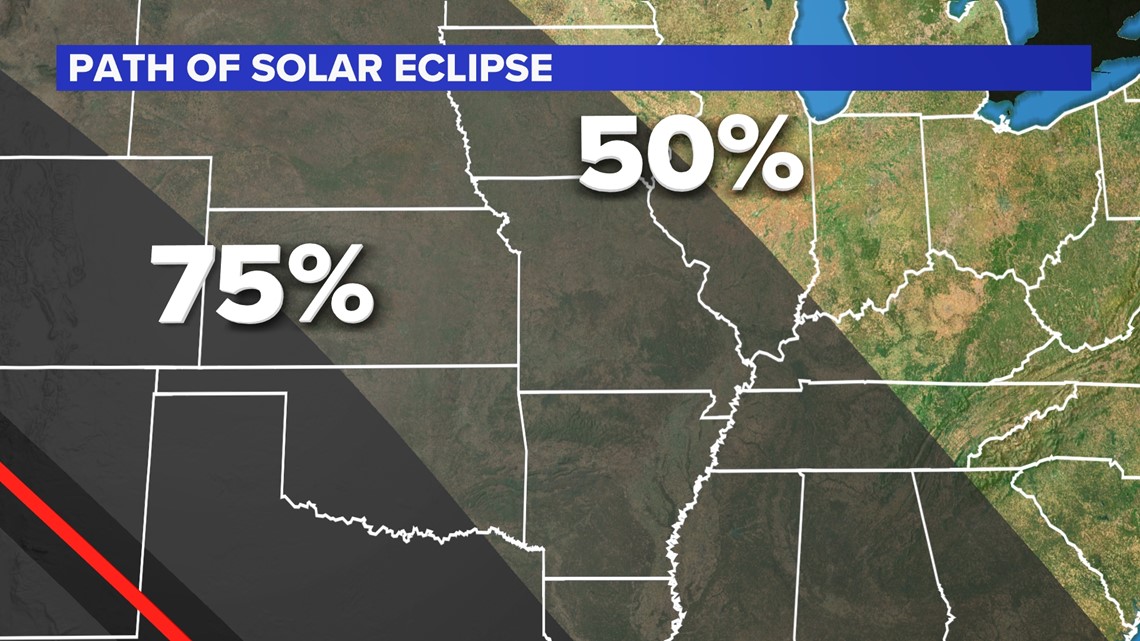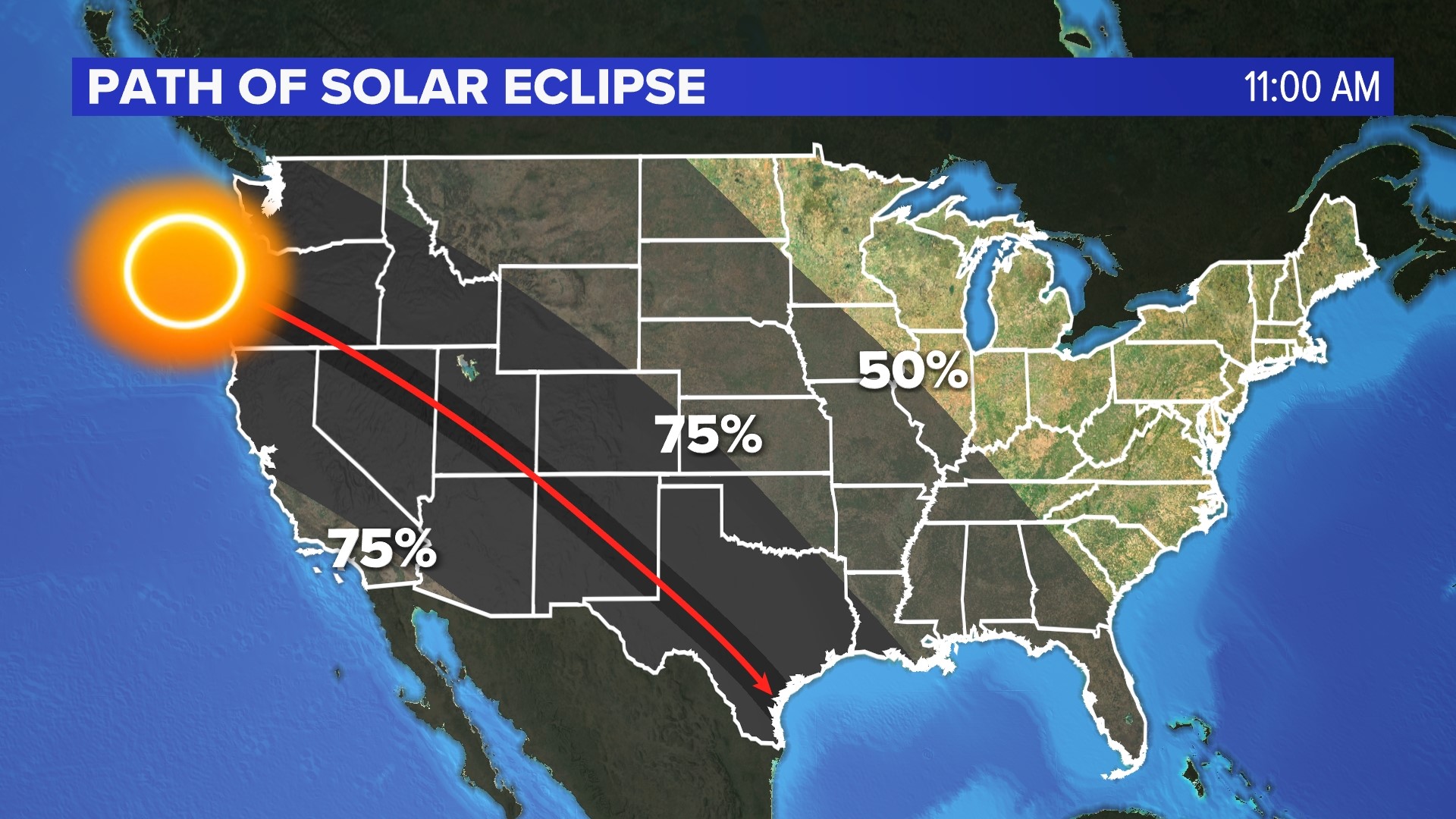ARKANSAS, USA — An annular eclipse is coming to the U.S. this weekend as the moon mostly blocks the sun in the late morning on Saturday (around 11:40 AM CDT). The path starts in Oregon and ends in Texas.
Can Arkansas and Oklahoma see it?
Tap here for the latest forecast on clouds.
Short answer: Yes, kind of... We won't see the ring of fire, but the sun will be partially blocked.
Annular vs Total Eclipse: What's the difference?
It's rare for us to get two eclipses within 6 months of each other, but we are lucky! They both will block the sun but with very different views. An annular eclipse takes place when the moon passes in front of the sun but it's not big enough to completely block it. This creates a ring of fire effect (pictured below to the left).
A total eclipse takes place when the moon passes in front of the sun but it is big enough to completely block it. In fact, this total coverage allows the human eye to see the corona of the sun, which normally you cannot see because the rest of the sun's rays are too bright.


Annual Solar Eclipse: Saturday, October 14, 2023 (late morning)
Total Solar Eclipse: Monday, April 8, 2023 (early-mid afternoon)
Where will you see the annular eclipse?
The black swatch with the red line shows the path of the maximum coverage or ring of fire effect. It starts in Oregon and passes through Nevada, Utah, the Four Corners region, and into Texas. The outside gray zones highlight states that will have at least the sun blocked out.
Locations in these areas may get very slightly dimmer, but not a big difference, almost as if a cloud is blocking part of the sun.


Arkansas and Oklahoma are in the 60-80% range of coverage. That means during the maximum coverage, a small sliver of the sun will still appear on the left side of the sun. Oklahoma will have a bigger bite taken out of the sun, as contrasted to Arkansas.
Timing
Generally, the maximum part of the eclipse is hitting the U.S. from 11:20 a.m. to 12 p.m. central. Arkansas and Oklahoma will be closer to the 11:45 a.m. timeframe.
Western Arkansas / Eastern Oklahoma
- 10:26 AM starts
- 11:46 AM maximum coverage
- 1:30 PM ends


For more information on the 2024 total eclipse, tap here.
-5NEWS Weather

